Report I World Congress on Lipedema Potsdam 4-7 October 2023
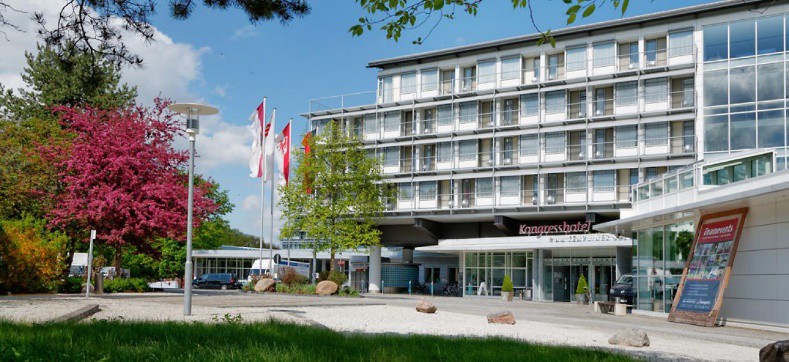
This is the first time that only Lipedema has been discussed at an international scientific congress with the world’s leading experts gathered in Potsdam from over 35 Countries. More than 500 participants testified that the interest in the subject is constantly growing and is bringing important news to the international scientific community. Many colleagues from overseas also took part with great interest, and the professionals were joined by numerous representatives of patient associations that have sprung up in recent years in various countries: from Lipedema UK, excellently represented by Sharie Fetzer and Kate Forster, to the Italian one with Valeria Giordano and Marcella Oggiano, to the Danish, Australian, Dutch, Swedish, Finnish, Canadian, and even the American ‘Fat desorders’ represented by Polly Harmour, which is particularly active worldwide.
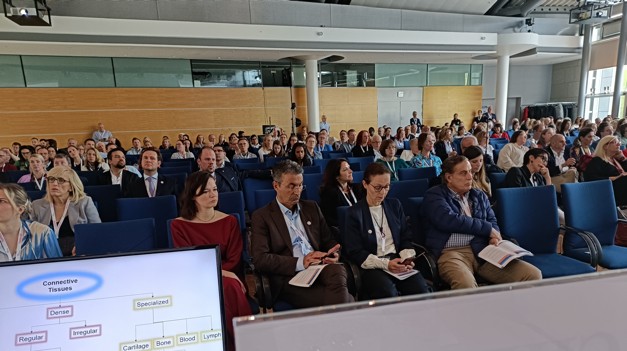
But there was no shortage of other important presences, such as the Lipedema Foundation (with a large representation), the important US Foundation, which was almost fully booked with its valuable staff and which alone funds around 10% of the research projects on the subject.
The perfect organisation by the Munich GmbH, coordinated by the admirable leadership of its coordinator Barbara Boeld, arranged all the foreseeable possibilities to make the entire conference environment welcoming and comfortable.
The event featured two important sessions on 4 October that lasted until late a[ernoon. In the morning, with live commentaries of surgical procedures on patients, those present were able to talk, discuss and ask questions to the various surgeons who illustrated their techniques.
Fabio Kamamoto (Sauo Paulo, Brazil) began by illustrating the technique of Laser Liposuction with simultaneous endovenous laser ablation (EVLA); this was followed by the team of Mojtaba Ghods (Postdam) with the ‘Lymph-sparing Hybrid Technique: MicroAire PAL Large-Volume Liposuction and Manual Extraction in General Anaesthesia for Advanced Stages Lipedema.
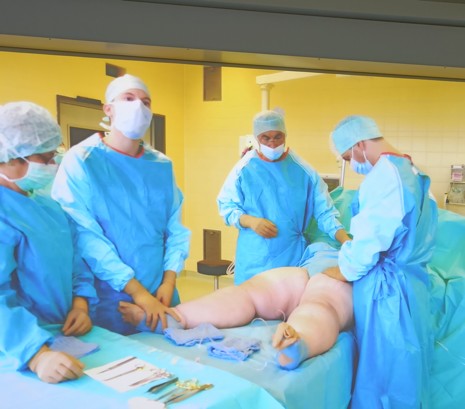
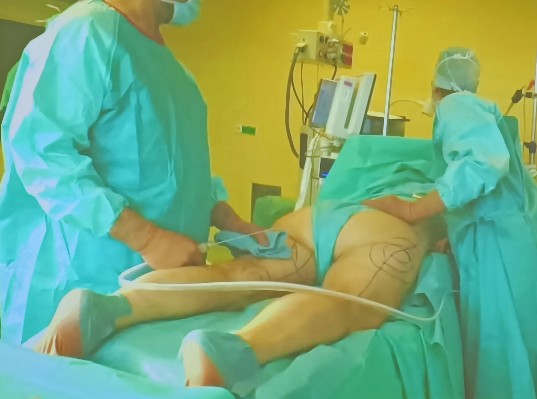
Then it was the turn of Ziah Taufig (Cologne, Germany) who demonstrated the Human Med body-jet technique WAL Liposuction in General Anesthesia. Then the French (Paris) Barbara Hersant described with a video presentation the technique of VASER Liposuction + Renuvion J Plasma in General Anesthesia. Finally, the morning ended with a talk in the presence of Thomas Wright, who illustrated his MicroAire PAL Liposuction in tumescent local anaesthesia technique by video. The images that alternated throughout the morning demonstrated how, with the application of effective techniques, the volumetric increase in the areas affected by Lipedema can be consistently reduced, with consequent benefit both functionally and on the symptoms related to the clinical picture.
The a[ernoon was dedicated to patient associations who presented the most frequent and most important problems encountered in their countries. These included the Lipoedema Australia, Lipedema Belgium, Associacao Brasileira de Pacientes Com Lipedema (ABRALI), the Canadian Weight of Lipedema, the Danish Lymph and Lipedema Association (DALYFO) and the Finnish Team Dercum, the French Association de la Maladie du Lipoedème France (AMLF), the two German associations Lipodem Hilfe Deutschland and Lymphselbsthilfe, the Lipoedema Association of Ireland, the LIO Lipedema Italia, the Dutch NLNet (Dutch Lymphoedema Framework and Lipedema Network), the Norwegian Norwegian Lymphedema and Lipedema Association, the Portuguese ANDLINFA, the Spanish Adalipe, the Swedish Svenska Odemforbundet (SOF), the English Lipedema UK d the two American Fat Disorders Rescource Society a la The Lipedema.
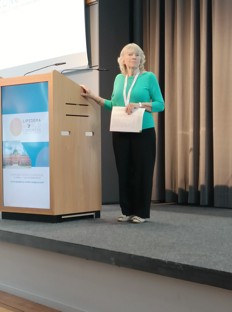
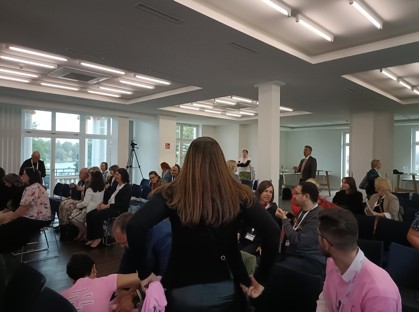
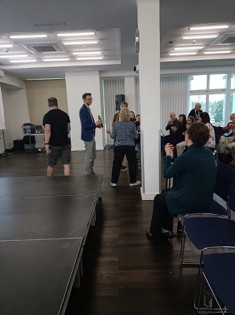
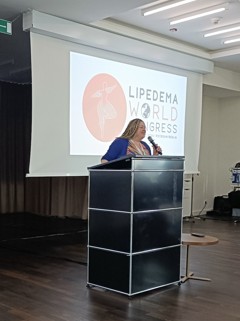
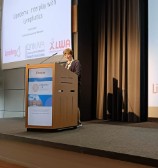
On 5 October, the scientific sessions began, all of a high standard and each preceded by speeches by patient associations who, alternating in the various presentations, were able to express themselves fully on their care needs.
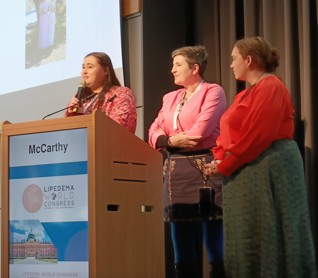
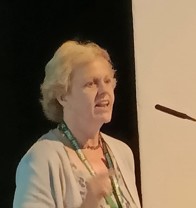
The first session began with a presentation by Christine Moffat on the current state of care for patients with lipedema, which highlighted the serious deficiencies that exist in most public and private care systems worldwide. This was followed by a number of presentations on home self-management of the condition.
At the end of the first session, the three presidents of the Congress, Mojtaba Ghods (the real host of the event), Karen Herbst and the writer, who reminded the audience that the disease was only a lihle over a year ago finally recognised by the World Health Organisation with its own code (EF.02.2) in the eleventh edition of the International Classification of Diseases, welcomed all those present to a packed and ahentive hall.
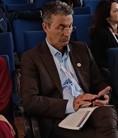
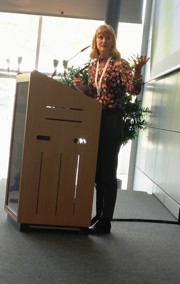
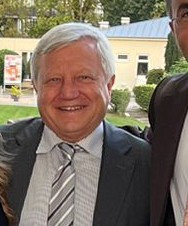
This was followed by the second session on the conservative treatment of lipedema in which several authors (Ure Christian, Michelini Serena and others) presented their experience, emphasising the essentially symptomatic aspect (although long-lasting and important in terms of symptom regression) of the treatments themselves.
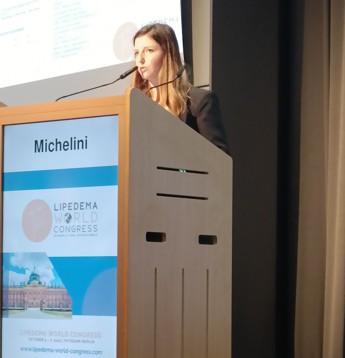
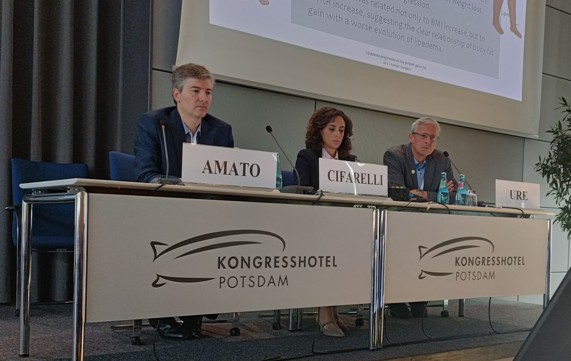
In the third session, papers were presented on the status of genetic studies (still much to be investigated, despite the fact that the disease has clearly been revealed as hereditary), on biochemical studies and on anatomical studies that are bringing us closer to a beher understanding of the pathogenesis of the disease. Several authors took turns, including the Australian Rami Shayar and the Italian Saverio Cinti.
The fourth session, with presentations by José Luis Simarro and the writer, was essentially devoted to the pathogenetic hypotheses of the disease and in particular some of its symptomatological aspects, first and foremost pain.
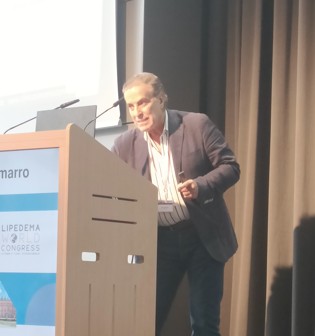
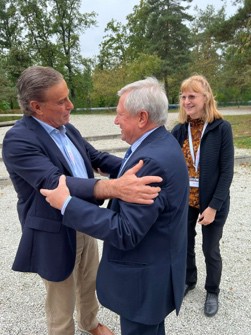
The fi[h and final session of the day was devoted to surgical treatment, and in particular to the various liposuction techniques, with the different complementary aspects of using the various methods. Presentations were given by, among others, Thomas Wright and David Christel.

During the lunch break, an extra-congress session was also held with presentations on the PAL technique and the quality of scientific articles for publication.
After the close of the proceedings, a meeting of the LWA Association Board was held during which important topics to be developed were discussed.
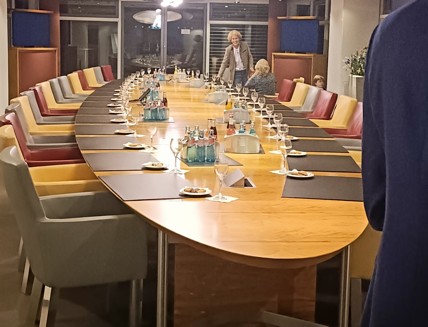
On 6 October, the day began with the General Assembly of the Lipedema World Association, a new association set up last year, made up of healthcare professionals but also (and this is an important innovation!) of patient associations, scientific societies and supported, in part, by ‘founding donors’, including Juzo Italia, Juzo International, LeSearch, Medi international and Medical Tactile. The writer, the current president, described the motivations and steps that led to the creation of the association, emphasising its ‘mission’, operating methods and organisational charter. He also made the official announcement that the association’s website, which can be visited at hhps://lipedemaworldalliance.com/, went ‘on line’ these days and is still ‘n progress’. But the registration phase of the regular members who will join the 104 founding members from 34 different countries has also begun. During the assembly (which had been preceded the evening before by a meeting of the Executive Commihee), a number of proposals were made, including that of organising, if possible, a ‘dedicated’ international congress every two years, in different locations.
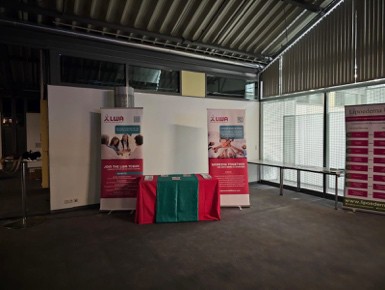
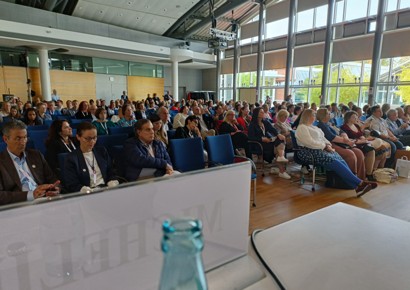
The importance of the Delphi study that is currently underway was also emphasised, in order to produce a document (position paper) that is to express the Association’s scientific viewpoint. Of the document (living) there would be the intention to renew its contents every two years, on the occasion of the Congress itself. At
the end of the General Assembly, an appointment was made for Saturday morning for the completion of the third step of the Delphi study, which should lead to the scientific publication of its final contents.
The penultimate day of the Congress then began with the first session devoted to the relationship between Lipedema and Obesity, which once again highlighted the fact that the association between the two pathologies is neither constant nor interdependent and that, in the case of obesity associated with Lipedema, bariatric surgery, which has a good effect on the classic sites of accumulation of adipose tissue, does not have such an effect in the anatomical sites affected by Lipedema itself.
The next session was followed by the presenter describing in more detail the aims of the Lipedema World Alliance. Johnatan Karh then described the activities of the Lipedema Foundation, which are mainly aimed at supporting scientific research. Karen Herbst and Gabriele Faerber then described the American and German Lipedema guidelines respectively. Faerber also made a comparison of the main consensus documents currently in place. During the lunch break also on Friday 6 October, there was the opportunity to follow extra- congressional work with the description of other surgical experiences (WAL and other techniques) by several alternating specialists.
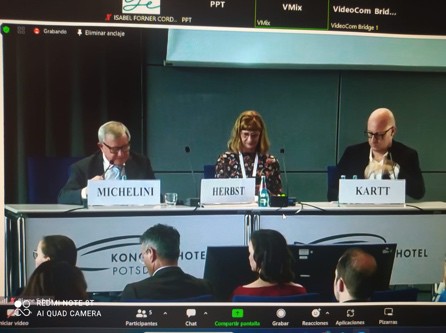
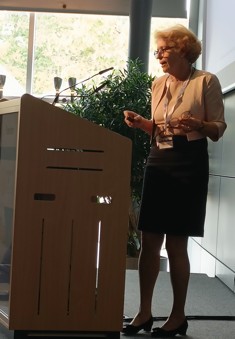
In the afyernoon, the resumption of proceedings was devoted to nutritional aspects; the presentations showed that the ketogenic diet (Giovanna Pitoo, Malgorzata Jeziorek and other authors) and ‘low carb’ are the most effective dietary regimes in the disease. This was followed by the session on epidemiological and diagnostic aspects with speakers touching on differential diagnosis aspects (Raschelle Crescenzi, Epaminondas Gousopoulos and other speakers) including that between Lipedema, Lipohypertrophy and Secondary Lymphoedema. The last session of the day aimed at highlighting the possible interactions between Lipedema and the lymphatic system and featured other important and well-known speakers such as Stanley Rockson, Alberto Onorato, Jean Paul Belgrado and Hakan Brorson.

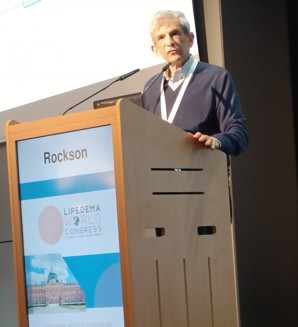
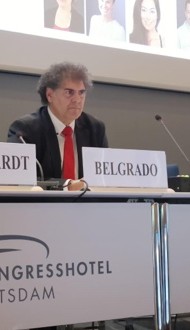
The evening ended with the Gala Dinner, during which the Lipedema Foundation honoured Ghods for his scientific and care commitment, and there were also some truly upli[ing ‘common sense’ moments of fun, during which it was possible to deepen mutual understanding between the various participants, as well as on some of the topics discussed a[er the presentations.
The Saturday morning began with a plenary discussion on the results of the first two steps of the Delphi study, which was so well ahended that it even lasted for much of the coffee break time. The lively and substantive discussion led to the final dra[ of the contents of the paper that will be published in the coming weeks.
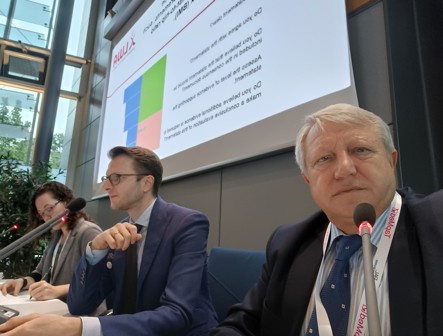
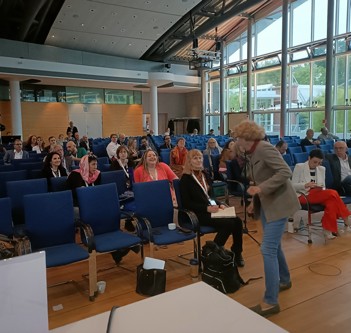
This was followed by the last conference sessions, the first of which was dedicated to basic science, histology and molecular analysis. Among the various papers presented, the one by Cannataro, who, with the coordination of the writer, carried out on tissue samples selected by me and taken by the Plastic Surgeon Nicola Vaia in Rome, together with his wife Erika Cione (biochemist at the University of Cosenza), showed the data of a preliminary study that highlighted the presence of an ‘up-regulator’ micro-RNA as a possible ‘marker’ of the disease, arousing lively interest in those present (at the moment, the diagnosis of the disease is essentially clinical).
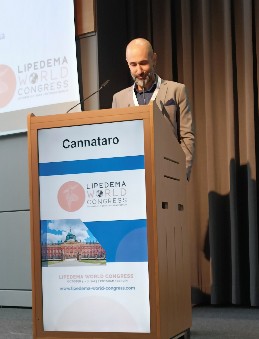
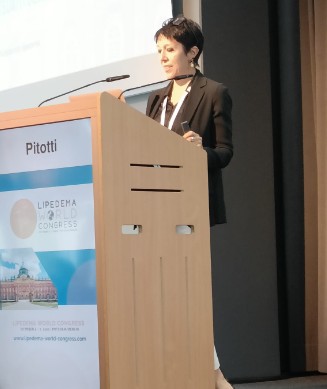
The last session was again dedicated to various liposuction procedures. Various speakers took turns (including Agostino Bruno, Enriquez Burgos, Uwe Wollina, Corrado Cesare Campisi, and others), who highlighted some aspects relating to the effectiveness of the techniques and the sparing of other anatomical structures (first and foremost the loco-regional lymphatic system).
As already mentioned, one of the novelties of the Congress was the role of the patients’ associations, which was much appreciated, precisely in the spirit advocated also by the WHO, of sharing the experiences of healthcare professionals with patients’ associations, also and above all, finalising the collaboration itself to the dra[ing of consensus documents useful in clinical practice and functional for recognition at the level of individual country governments.
My special thanks go to my colleague Ghods for his extraordinary ability to polarise the world’s best experiences in the field into a single meeting, for the content of the programme, and for the splendid organisation and hospitality offered. And further thanks to Philipp Kuppa for his strong support of all conference initiatives and those of the Lipedema World Alliance.
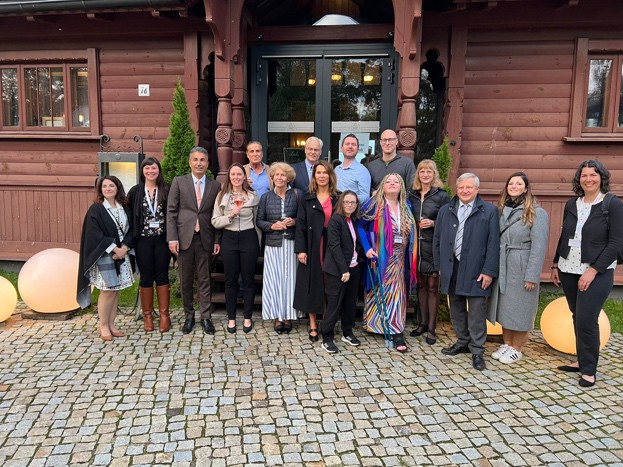
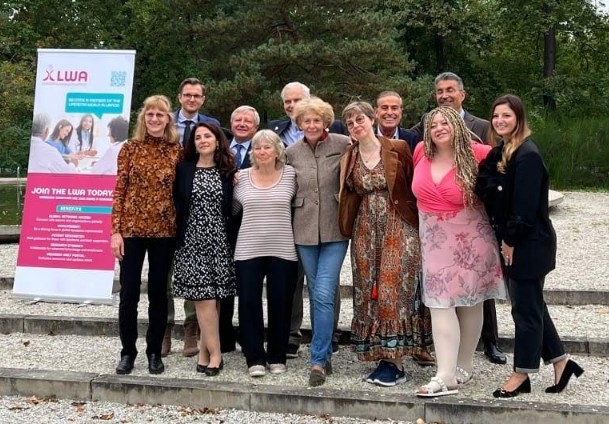
See you in two years’ time, probably in Rome, to improve and intensify mutual efforts aimed at the sole interest of beher understanding the disease and resolving its painful clinical and social implications.
Sandro Michelini
President of Lipedema World Alliance
Postdam 7 October 2023






